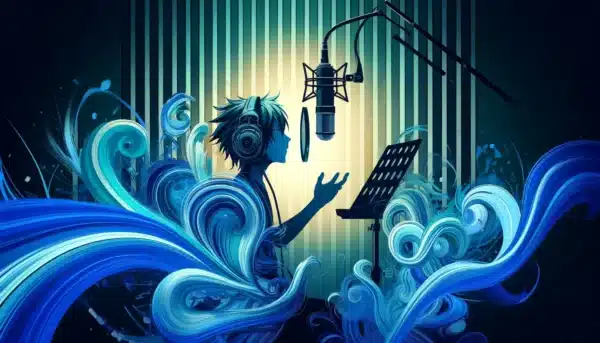There is much magic in the art of ADR (Automated Dialogue Replacement) in anime. ADR is not just about replacing dialogue; it’s about enhancing the emotional depth and authenticity of anime characters. Here are some expert tips and advice from seasoned voice actors in the anime industry.
Understand the Character
First and foremost, understanding your character is crucial. Johnny Yong Bosch, known for his roles in “Bleach” and “Naruto,” advises, “You have to live as the character. Their emotions, backstory, and motivations should be clear in your mind before you step into the booth.” This deep understanding allows you to deliver lines that feel true to the character’s essence. Stephanie Sheh, the voice of Hinata in “Naruto,” adds, “Immerse yourself in the character’s world. Watch the anime, read the manga, and grasp their relationships and struggles.
Timing and Sync
ADR work is all about timing. Your ability to sync your voice to the character’s mouth movements is critical. Crispin Freeman, who voiced characters in “Hellsing” and “Fate/Zero,” notes, “It’s like a dance where timing is everything. Practicing with the lip flaps in silent mode can help you get the timing down.” This technique involves watching scenes with the sound off to focus purely on the visual cues. Cherami Leigh, known for her roles in “Sword Art Online” and “My Hero Academia,” suggests, “Break down the lines into smaller chunks and focus on matching the mouth movements precisely. It’s a skill that improves with practice.”
Emotional Authenticity
Bringing genuine emotion into your recordings can make or break your performance. Mary Elizabeth McGlynn, a veteran in the field and the voice behind major roles in “Ghost in the Shell,” emphasizes the importance of emotional authenticity. “You need to feel what the character feels — the sadness, the joy, the anger. Only then can the audience truly connect with them,” she explains. Bryce Papenbrook, the voice of Eren in “Attack on Titan,” adds, “Don’t be afraid to tap into your own emotions. Draw from personal experiences to bring authenticity to your performance.”
Vocal Health
Maintaining your vocal health is paramount. Long sessions can be straining, and protecting your voice becomes essential. Steve Blum, with his distinctive work on “Cowboy Bebop,” recommends, “Regular vocal warm-ups and staying hydrated are key. Avoid caffeine and dairy on recording days as they can affect your voice quality.” Kari Wahlgren, known for her roles in “FLCL” and “Samurai Champloo,” suggests, “Find a vocal warm-up routine that works for you. It could be lip trills, humming, or even gentle stretches. Consistency is key.”
Adapt and React
In ADR, the ability to adapt quickly to directorial feedback is invaluable. Tara Strong, the voice of countless beloved characters, suggests, “Be open to redirection and be prepared to experiment. Sometimes, a slight change in tone or pitch as per the director’s feedback can elevate a scene significantly.” Robbie Daymond, known for his roles in “Sailor Moon” and “Digimon,” adds, “Trust the director’s vision. They have a deep understanding of the project, and their guidance can help you deliver your best performance.”
Continuous Learning
The field of voice acting, especially in anime, is ever-evolving. Continuous learning and adapting new techniques are essential. Workshops, voice acting classes, and even online tutorials can help refine your skills. Engaging with other voice actors and directors also provides new insights and methods. Erica Mendez, the voice of Ryuko in “Kill la Kill,” emphasizes, “Never stop learning. Attend workshops, listen to industry podcasts, and learn from your peers. Every experience is an opportunity to grow.”
Technology and Equipment
Familiarizing yourself with the technology and equipment used in ADR sessions can greatly enhance your efficiency. Understanding the basics of the software used or the microphone techniques can save time during recordings and allow for a smoother session. Yuri Lowenthal, known for his roles in “Naruto” and “Prince of Persia,” advises, “Invest in a good quality microphone and learn the basics of audio recording software. It’ll make a world of difference in your home recordings and auditions.”
Networking
Finally, networking is crucial. Building relationships within the industry can lead to more opportunities and collaborations. Attend industry events, participate in forums, and maintain an active presence on social media. Engaging with the community not only builds connections but also helps in staying updated with industry trends. Cristina Vee, known for her roles in “Sailor Moon” and “The Seven Deadly Sins,” suggests, “Attend conventions, participate in online voice acting communities, and don’t be afraid to reach out to fellow voice actors. Collaboration and support are key in this industry.”
AND SO…
ADR voice acting in anime is a unique and rewarding career. It requires a blend of technical skill, emotional depth, and continual growth. By following these tips from industry veterans and continually honing your craft, you can excel in this exciting field.
For more insights, visit the websites of professionals like Johnny Yong Bosch, Crispin Freeman, Mary Elizabeth McGlynn, Stephanie Sheh, Cherami Leigh, D.C. Douglas, Bryce Papenbrook, Kari Wahlgren, Robbie Daymond, Erica Mendez, Yuri Lowenthal, and Cristina Vee to learn from their experiences and career paths. Their journeys and advice serve as valuable guides for aspiring voice actors in the anime industry.
– TSG Management









